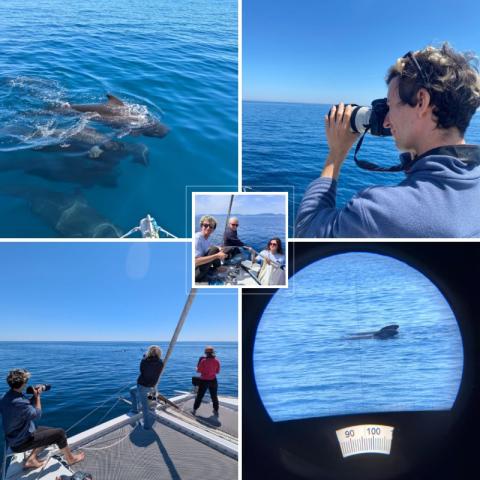You think we spend all our time behind a computer?
Well, not quite.
The day-to-day work of our ecological engineers involves conducting research, analyzing data and carrying out studies on behalf of public and private players.
So yes, most of the time we have our hands in statistics, modeling and mapping tools, scientific literature...
But when data or knowledge are lacking, we sometimes have to go out and find them, in the field.
A few days ago, our colleague Victor Gauducheau, a specialist in marine environments, cast off for a little trip out to sea.
He embarked alongside the ModelCet teams, a scientific program supported by the French Biodiversity Office (OFB) and the Offshore Wind Observatory, and in which we have been participating since early 2024.
The aim of this program is to map the distribution and abundance of cetaceans in the Mediterranean in order to assess the state of marine ecosystems, identify areas sensitive to human pressures, and thus guide maritime planning.
For four days, Victor accompanied a mission to little-explored marine areas, notably the continental slope (where the seabed sinks to the depths) and the abyssal plain (deep-sea areas, several thousand meters from the surface). These environments, located far from the coast, are difficult to access, but represent key habitats for many marine species.
The expedition aimed to identify the cetacean species present in these areas, collect scientific data to feed ModelCet's work, provide evidence to assess the potential impacts of human infrastructures at sea such as offshore wind farms, and strengthen cooperation between researchers, associations, public institutions and managers of natural marine areas.
Exceptional sightings included two groups of blue and white dolphins, including juveniles, as well as several pilot whales - a rare encounter in the Mediterranean - and two sperm whales. Several “clicks”, the characteristic sounds they emit, were even heard thanks to a hydrophone (underwater microphone).
This mission (like the others carried out as part of this project) illustrates the importance of collaborative research for the preservation of cetaceans and their habitats.
So a big thank you to the ModelCet team, to the MIRACETI association and Hélène Labach, to the OFB and Constance A.. and to all the participants for their commitment to marine biodiversity!
